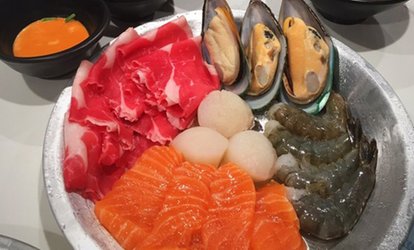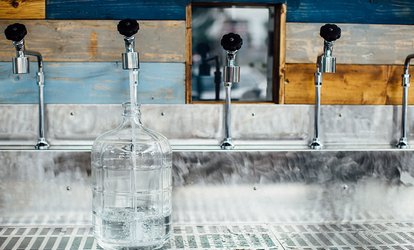OUR OZONE EQUIPMENT AND YEARS OF
FOOD & BEVERAGE INDUSTRY EXPERIENCE
WILL HELP YOUR COMPANY WITH YOUR DAILY
PROCESSING AND SANITATION REQUIREMENTS
OZONE SAFE FOOD TECHnologies, inc.
Ozone Safe Food Technologies is the premier provider of processing, sanitation and water treatment equipment for FOOD and BEVERAGE processors in North America, South America, Europe, Asia, and Africa. Since the founding of our company, our mission is to provide the highest quality of food safety, sanitation, air and water purification equipment worldwide.
Ozone Safe Food Technologies owns several United States of America Issued Patents for its ozone systems. We manufacturer ozone systems that are built and designed specifically for food processing, sanitation, air purification and water treatment. Our equipment is used worldwide by companies in the beef, pork, poultry, seafood, fruit, vegetable, beverage and other food processing industries.
Ozone Safe Food Technologies owns several United States of America Issued Patents for its ozone systems. We manufacturer ozone systems that are built and designed specifically for food processing, sanitation, air purification and water treatment. Our equipment is used worldwide by companies in the beef, pork, poultry, seafood, fruit, vegetable, beverage and other food processing industries.
Ozone Safe Food Technologies has proven to be the most innovative ozone technology company in the world.
Ozone, a gas that is a triatomic form of oxygen, has been used for years in applications such as treatment of municipal water and bottled water. In fact, it has been used as a disinfectant in drinking water since 1893, as a food preservative for the cold storage of meats since 1909, and was found to prevent the growth of yeast and mold during the storage of fruits in 1939. Ozone has enjoyed a long history of use and is known as a broad-spectrum biocide against viruses, bacteria, biofilms, fungi and protozoa— none of which can build up a resistive tolerance to ozone, because ozone disinfects by oxidation processes. Ozone does not act as a systemic poison to microorganisms, but rather, destroys them by oxidation. Consequently, it is impossible for a microorganism to build up any resistance to oxidation. Today, ozone technology is beginning to be used effectively as an additional point of intervention in the food and beverage industry.
Ozone gas is generally created on-site by a generator via an electrical charge or from oxygen using the same process. The gas is injected and dissolved into water, and the ozonated water is used as a rinse, mist, spray or bath. The ozone survives for only a matter of minutes before decomposing into ordinary oxygen.

As an environmentally friendly disinfectant, ozone now is being used worldwide as an alternative to chlorine sanitizers in many segments of the food industry. Ozone-enriched water kills microbes as effectively as chlorine if not better, and since it is generated on-site its use eliminates the need for personnel to handle, mix and dispose of harsh chemicals for sanitation. Further, since ozone readily reverts to oxygen, an end-product that leaves no residue on contact surfaces. Ozone-enriched water can be sprayed directly on floors, drains, walls, wettable equipment, tanks (externally and internally), and clean rooms via mobile or centralized systems with hand-held or drop-down, low-pressure sprayers. The use of ozone water for sanitation in food and beverage facilities removes and/or prevents biofilm. In addition, resulting runoff water is extremely clean and will improve overall plant sanitation by reducing overall microbial load.

In response to a Food Additive Petition submitted during August 2000, the U.S. Food and Drug Administration (FDA) formally approved the use of ozone as an Antimicrobial Agent for the Treatment, Storage and Processing of Foods in Gas and Aqueous Phases. The approval was published on June 26, 2001.

On Dec. 21, 2001, the U.S. Department of Agriculture’s Food Safety and Inspection Service (USDA/FSIS) approved the use of ozone in contact with meats and poultry, from raw product up to fresh cooked and products just prior to packaging. In addition to direct contact disinfection of foods, ozone also can be applied to food processing equipment and non-food contact surfaces as part of a food company’s sanitation efforts.
In the early 1980s, the International Bottled Water Association (IBWA) petitioned the FDA to affirm that the application of ozone to disinfect bottled water under specified conditions is Generally Recognized As Safe (GRAS). The conditions included a maximum dosage of ozone of 0.4 mg/L over four minutes contact time, and that the water to be treated must already meet the potable water requirements of the U.S. Environmental Protection Agency (EPA). The FDA approved IBWA’s petition for ozone in bottled water, and in 1982, published in the Code of Federal Regulations (CFR) a formal FDA regulation affirming GRAS Status for use of ozone. Later, FDA also approved the use of ozone as a sanitizing agentfor bottled water treatment lines under a similar GRAS petition.
In June 1997, an expert panel of food scientists convened by the Palo Alto, CA-based Electric Power Research Institute (EPRI) concluded the following: “The available information supports the safety of ozone when used as a food disinfectant or sanitizer, and further that the available information supports a GRAS classification of ozone as a disinfectant or sanitizer for foods when used at levels and by methods of application consistent with good manufacturing practices” (authors’ emphasis).

EPRI’s GRAS affirmation gave a clear green light to food processors to test and use ozone for a variety of food processing applications. Nevertheless, the lack of specific regulatory approval for ozone published by the FDA in the Federal Register continued to disturb many food processors and slowed the broader acceptance of ozone in the food industry. FDA recognized this, and also recognized that most applications for ozone in food treatment involve antimicrobial properties of ozone. Consequently, in mid-1999, the FDA suggested to the EPRI that a single FAP that would provide FDA with specific data showing the antimicrobial properties of ozone in a number of food processing applications could be reviewed quickly, and if approved, would overcome the requirement of the 1982 GRAS regulation regarding “other food uses for ozone.” EPPJ agreed with this approach and, with considerable support from several interested food processing organizations, developed such an FAP and formally filed it with the FDA in August 2000. FDA approval of this FAP was published June 26, 2001 in the Federal Register. Later in the year, USDA/FSIS approved ozone for use on meat and poultry products, including treatment of ready-to-eat meat and poultry products just prior to packaging, with no labeling issues in regard to treated product.
FOOD INDUSTRY APPLICATIONS AND EVALUATIONS OF OZONE
Ozone may be used safely in the treatment, storage and processing of foods, including meat and poultry in accordance with the following prescribed conditions: The additive is used as an antimicrobial agent in the gaseous or aqueous phase in accordance with current industry standards of good manufacturing practice. By “good manufacturing practice” in relation to ozone treatment, the FDA means the exposure of foods to sufficient ozone (concentrations and times of exposure) sufficient to accomplish its intended purpose(s).
Ozone may be used safely in the treatment, storage and processing of foods, including meat and poultry in accordance with the following prescribed conditions: The additive is used as an antimicrobial agent in the gaseous or aqueous phase in accordance with current industry standards of good manufacturing practice. By “good manufacturing practice” in relation to ozone treatment, the FDA means the exposure of foods to sufficient ozone (concentrations and times of exposure) sufficient to accomplish its intended purpose(s).

With respect to the use of ozone in the direct contact disinfection of food, companies show benefits ranging from microbial load reduction to increased shelf life of many different types of food products. For example, several Produce Companies utilize ozone and filtration systems for processing its fresh- cut salads, and have reported that the ozone systems provide them with a greater assurance of food safety, improves shelf life, and substantially reduces the facilities' water usage. Results from many Seafood Companies ozone systems for fish processing indicate about a 50% increase in the shelf life of white fish. Similarly, ozone air treatment systems installed by Fortune 500 Food Companies for the control of mold in the vestibule of the packaging room, have yielded better than an 99% reduction in mold.

Ozone as a sanitizer for food processing equipment has also showed that microbial load is greatly reduced by spraying ozone water on these surfaces. Our ozone systems are able to deliver an applied ozone dose of over 2.0 ppm dissolved in the water for any water flow rate. (gpm/lpm).
Various surfaces in any processing facility can sprayed with the ozonated water and on contact with 2ppm of dissolved ozone will be disinfected. Surfaces include, stainless-steel equipment, floors, walls, drains, and any plastic containers.
Various surfaces in any processing facility can sprayed with the ozonated water and on contact with 2ppm of dissolved ozone will be disinfected. Surfaces include, stainless-steel equipment, floors, walls, drains, and any plastic containers.
One of the many advantages of ozone is its ability to readily oxidize microbes in solution such that once a surface is spray-washed, the microorganisms physically lifted from the surface will be killed as they find their way to a drain.
PROVEN SCIENCE - LET US HELP YOU
The following disinfection results indicate percent reduction for specific microorganisms tested.
• Escherichia coli*
(ATCG 11229) …………………99.999%
• Aspergillusfiavus
(ATCC 9296) ………………… 99.99%
• Brettanomyces bruxellensis
(ATCC 10560) …………………99.99%
• Campylobacterjejuni
(ATCC 33250) …………………99.99%
• Listeria monoytogenes
(ATCC 7644) ………………… 99.99%
• Pseudomonas aeruginosa
(ATCC 15442) …………………99.9999%
Salmonella choleraesuis
(ATCC 10708) …………………99.9999%
• Staphylococcus aureus
(ATCC 6538) ………………… 99.9999%
• Trichophyton mentagropphytes
(ATCC 9533) ………………… 99.9999%
• Escherichia coli*
(ATCG 11229) …………………99.999%
• Aspergillusfiavus
(ATCC 9296) ………………… 99.99%
• Brettanomyces bruxellensis
(ATCC 10560) …………………99.99%
• Campylobacterjejuni
(ATCC 33250) …………………99.99%
• Listeria monoytogenes
(ATCC 7644) ………………… 99.99%
• Pseudomonas aeruginosa
(ATCC 15442) …………………99.9999%
Salmonella choleraesuis
(ATCC 10708) …………………99.9999%
• Staphylococcus aureus
(ATCC 6538) ………………… 99.9999%
• Trichophyton mentagropphytes
(ATCC 9533) ………………… 99.9999%
















